
TOPEKA REGIONAL AIRPORT@FORBES FIELD, TOPEKA, KANSAS

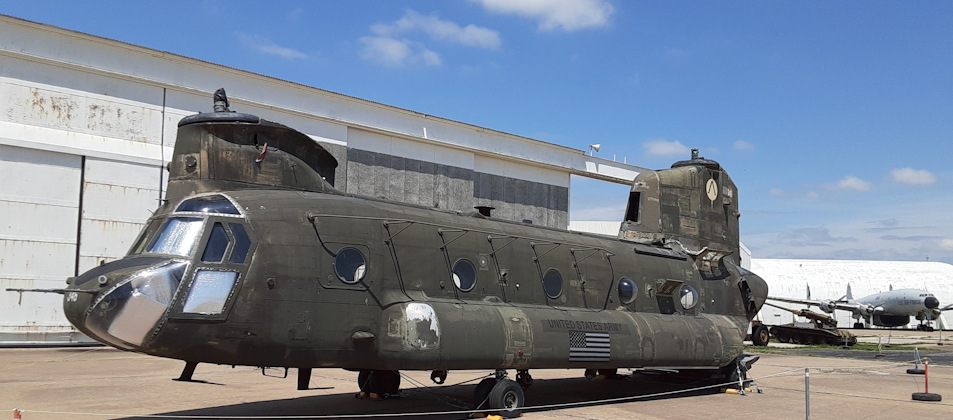
BOEING CHINOOK CH-47D (US Army 85-24346)
(Original designation US Army 67-18504 in CH-47C Format)
The Boeing "Chinook" line of medium-lift, tandem-rotor transport helicopters has been a mainstay utility system for the United States Army (and others) for decades since its introduction in 1962. The iconic design was given a tandem-rotor approach to provide the necessary lift properties when hauling medium-class loads over the battlefield - able to transport weaponry, supplies, a full complement of combat-ready troops, and other useful components to and from operating points.
It was granted the name of "Chinook" in keeping with Army tradition of naming its helicopters after Native American tribes. The CH-47A entered service in August of 1962 to begin its long and storied career.
The United States Army took on a total of 354 CH-47A models and these were then followed into service by the improved CH-47B. The CH-47C upgrade from the "B" model saw its gearbox and engines upgraded while fuel stores were expanded for increased operational ranges. Its first flight was during October 14th, 1967 and 233 production units followed. Many existing A- and B-models were eventually upgraded to the C-standard in time. The primary Army models of the Vietnam War were the CH-47A, CH-47B, and CH-47C - some Chinooks outfitted for delivering napalm loads rolled out of the rear of the aircraft while others were modified for the combat assault role.
After the Vietnam War, the Army recognized that that the Chinook fleet was rapidly reaching the end of its useful life and signed a contract with Boeing to significantly improve and update the CH-47. Boeing began a major fleet upgrade that led to development of the CH-47D. Almost 500 early model Chinooks went through an extensive modernization process in Philadelphia that produced an essentially new CH-47 fleet. Three airframes, CH-47A, CH-47B, and a CH-47C, were stripped down to their basic airframes and then rebuilt with improved systems to provide three CH-47D prototypes. Improvements included upgraded power plants, rotor transmissions, integral lubrication and cooling for the transmission systems, and fiberglass rotor blades. Other improvements included a redesigned cockpit to reduce pilot workload, redundant and improved electrical systems, modularized hydraulic systems, an advanced flight control system, and improved avionics. The Chinook has two tandem three-bladed counter-rotating fiberglass rotors. The CH-47D Chinook was a central element in U.S. Army operations in the Persian Gulf War.
In February of 1982 the CH-47D model first took to the air and this model incorporated uprated engines with slightly reduced hauling capabilities. Beginning in 1982 and ending in 1994, all CH-47A, B and C models were upgraded to the CH-47D version, featuring composite rotor blades, an improved electrical system, modularized hydraulics, triple cargo hooks, avionics and communication improvements, and more powerful engines that can handle a 19,500 lb. load – nearly twice the Chinook’s original lift capacity. Our model was converted and delivered to the US Army in the "D" configuation on 15 May 1986.
The Chinook’s cockpit accommodates two pilots and an observer. The communications suite includes jam resistant HF and UHF radio systems and the helicopter is equipped with an Identification Friend or Foe (IFF) interrogator. Three machine guns can be mounted on the helicopter, two in the crew door on the starboard side and one window-mounted on the port side. Additionally, the helicopter is equipped with a suite of countermeasure systems, which could include one or more of the following: a missile approach warner, jammers, radar warner, and chaff and flare dispensers.
The Chinook has a triple hook system, which provides stability to large external loads or the capacity for multiple external loads. Large external loads such as 155mm howitzers can be transported at speeds up to 260km/h using the triple hook load configuration. Multiple external loads can be delivered to two or three separate destinations in one sortie. The cabin provides 42 cubic meters of cargo space and 21 square meters of cargo floor area and can accommodate two HMMWVs (High Mobility Multipurpose Wheeled Vehicle) or a HMMWV together with 105mm howitzer and gun crew. The main cabin can hold up to 33 fully-equipped troops. For medical evacuation, the cabin can accommodate 24 litters (stretchers).
During Desert Storm "the CH-47D was often the only mode of transportation to shift large numbers of personnel, equipment, and supplies rapidly over the vast area in which US forces operated. The cargo capacity and speed provided commanders and logisticians a capability unequalled by any Army in the world." (Army Aviation in Operation Desert Storm, 1991) During the ground phase, the flanking maneuver executed by the XVIII Airborne Corps was planned with the CH-47D as the keystone. Forward Operating Base Cobra was deliberately positioned to accommodate the combat radius of a fully loaded CH-47D. Cobra was initially secured by an air assault of the 101st's 2nd Infantry Brigade. This air assault, consisting of 5,000 soldiers, was accomplished by a total of 126 Blackhawks and 60 Chinooks. By the end of the first day the CH-47Ds had lifted 131,000 gallons of fuel along with pallets of combat-configured ammunition for the next day's fight. Forty separate refueling and rearming points were active in FOB Cobra in less than two hours.
Manufacturer: Boeing Service: US Army
Armament: 3x M240 7.62 machine guns
Propulsion: 2x Lycoming T55-GA-714A turboshaft
Max Speed: 184 mph Range: 400 mi
Troop Capacity: 36 (33 troops plus 3 crew members)
Sling-Load Capacity: 26,000 lb. center hook
Rotor diameter 18.29 m (60 ft.)
Length with rotors operating 30.14 m (98 ft. 10.7 in)
Fuselage 15.46 m (50 ft. 9 in)
Height 5.68 m (18 ft. 7.8 in)
Fuselage width 3.78 m (12 ft. 5 in)
Fuel capacity 45,000 lb. (20, 411 kg) class
81,000 lb. (36, 700 kg) max gross takeoff
Maximum speed 302 km/h (170 KTAS)
Cruise speed 291 km/h (157 KTAS)
Mission radius 200 nm (370.4km)
Service ceiling 6,096 m (20,000 ft.)
Max gross weight 22,680 kg (50,000 lbs.)
Useful load 24,000 lbs. (10,886 kg)
Boeing Chinook #85-24346: A Partial Operational History: (a work still in progress)
1967 - Born a C Model, Serial # 67-18504
Jan 1972 - Assigned to 147th Assault Support Helicopter Company "Hillclimbers", Vietnam
Feb 1972 - June 1974: Assigned to 147th Aviation Company "Hillclimbers", NAS Barbers Point, Hawaii
1985 - D Model conversion Serial # 85-24346
May 1986 - Accepted by the US Army 15 May 1986
Assigned to 7th Battalion, 101st Aviation Regiment, Fort Campbell, KY
1989 - B Co. "Varsity" 7-101 AVN REGT, 101st Airborne Division, Fort Campbell, KY.
1990 - B Co. "Varsity" 7-101 AVN REGT Detachment in Honduras serving on TASK FORCE SOUTHERN EAGLE. Flew to Honduras.
Sept 1990 - Relieved from duty in Honduras by the 214th Avn Regt (Freight Trains) of Fort Lewis, WA.
The Detachment then deployed to Saudi Arabia to reestablish the Company and completing 7th Battalion's deployment to Southwest Asia as part of TEAM BRAVO TASK FORCE 9-101 (Desert Storm/Desert Shield)
2006 - Assigned to F Company, 158th Aviation Regiment, US Army Reserve - Kansas, Olathe, KS
Sept 11, 2019 - Delivered to Combat Air Museum, Topeka, KSThis aircraft is owned by the Combat Air Museum
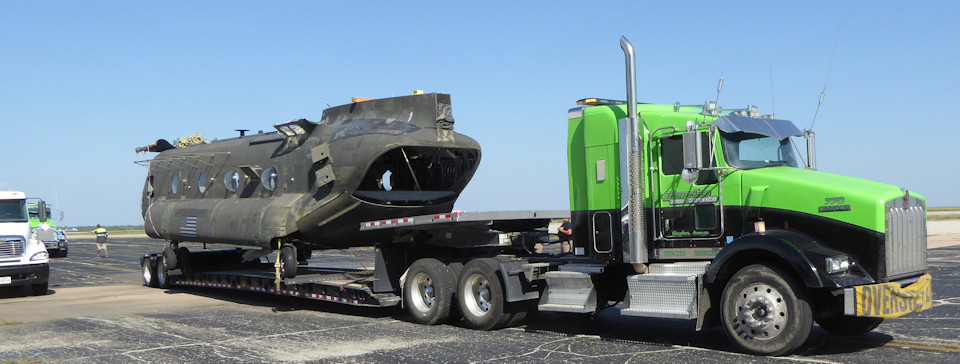
346 Arrives at CAM on September 11, 2019 with the very able assistance of
Kitch Towing & Recovery, Topeka and Marvins Tow Service, Gardener, KS
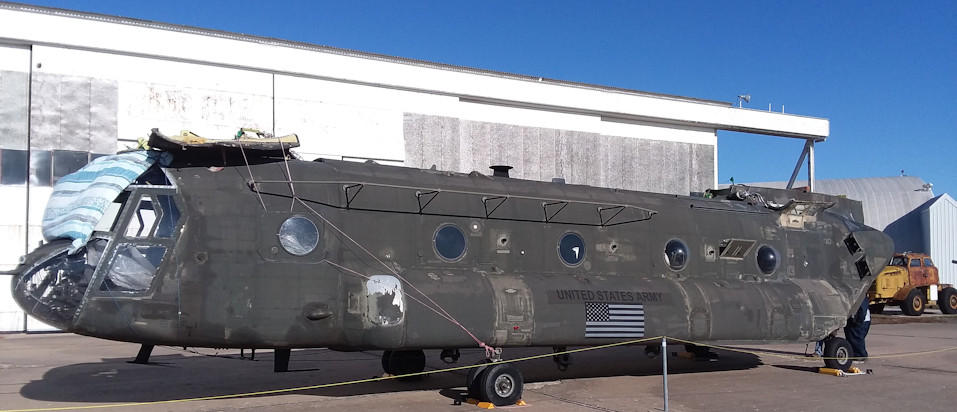
346 positioned east of Hangar 604 at CAM
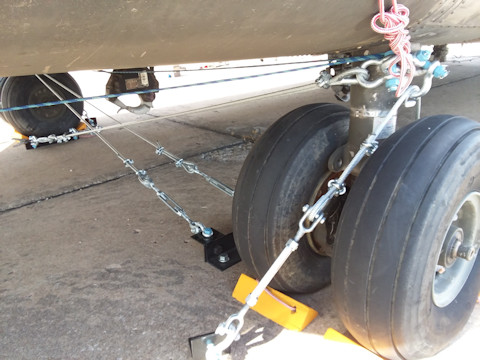
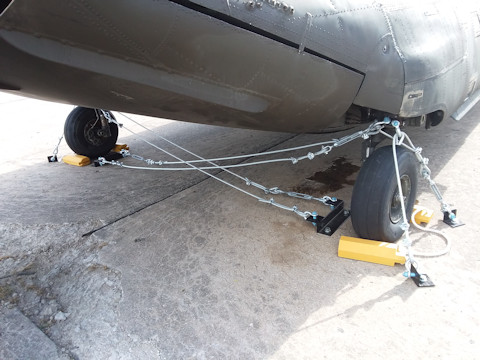
Aircraft tie-downs installed
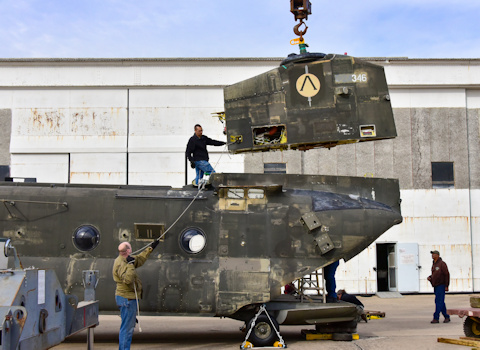

Aft Pylon and Transmission Gears reattached November 20, 2019
